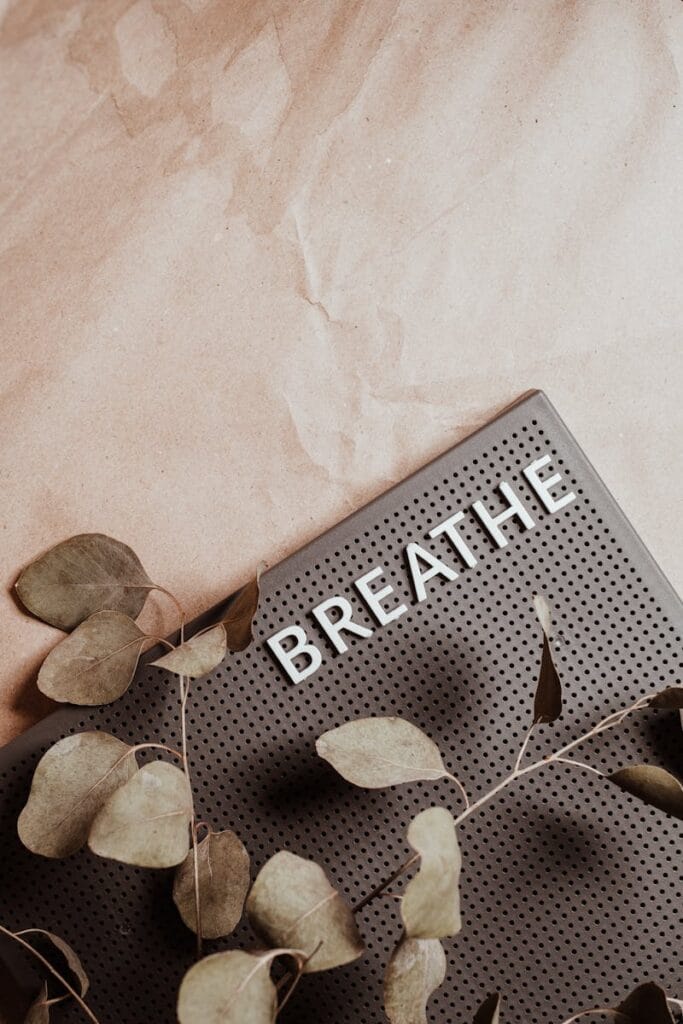Your mind is always doing stuff – noticing sensations, thinking, keeping your body going and helping you to navigate the world. Sometimes our mind sends us in a direction or creates a feeling that we wish wasn’t happening. In order to help the mind and body readjust to a more desired state, we need to do something to let the body know it’s safe and potentially provide another perspective. Your breathing is a way for your conscious self to communicate with your unconscious self. Breathing is a language of the body.
As you learn this language with its various size, tone, and rhythmic variations, you begin to understand more about your self and how your body responds to your experiences. When you intentionally alter your breath, you send signals to your body. By noticing how you’re breathing, you can gain insight into how you’re feeling. With practice you can start to notice when your breathing changes, enabling you to be more aware of shifts in your body.
In general, when you’re able to slow your breath down, soften the breath, and breathe lower into your ribs, you can let the body know it’s okay and it’s safe to calm down or relax. By breathing a little quicker and adding in some movement, you can energize the body and help create some motivation to go do the next thing. Through consciously connecting and looping your breath, you can get out of your head and into your body.
Breathwork is intimately connected to your emotions. Every emotion has a breathing pattern. A gasp, a sigh, a sob, a giggle, etc. Breathwork can also be a way to explore sensations in a safe and controlled manner. By practicing with breathwork, you practice getting comfortable with a wider range of feelings. As you become more comfortable with this wider range of feelings, you’re building your respiratory capacity and emotional resiliency. Through breathwork you’re able to develop your self-regulation toolkit, learn about yourself, and ways to let your body know you’re safe.
Noticing how you’re breathing right now is a great place to start.
Simply notice your breath in your body. You don’t need to intentionally control or do anything, simply observe. You are letting the breath breathe you. You are allowing the breath to come and go by itself, the way it wants. You’re just an impartial observer, a detached witness.
If the breath moves through your nose, focus your attention on the feelings and sensations in your nostrils and at the tip of your nose as the air passes in and out. If breathing through your mouth, notice the feelings and sensations of the air as it passes over your lips and tongue, the roof of your mouth and your throat.
You can also focus on the feelings and sensations in your chest or belly as the breath moves in and out. Be aware of what moves in your body when you breathe. When your mind wanders, or you get caught up in thinking, or when something else pulls your attention away, come back to your breathing: focus totally on your next breath. When feelings and sensations in your body distract you, notice how they affect your breathing.

If you want to learn more, schedule a complimentary consultation or an individual breathwork session.

